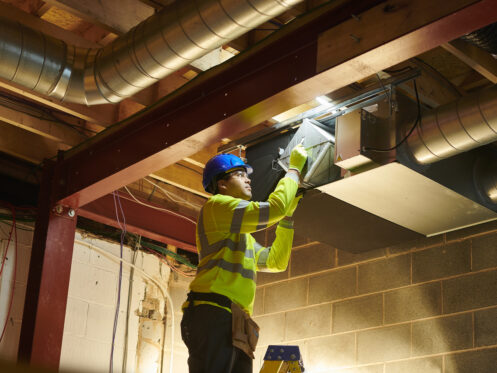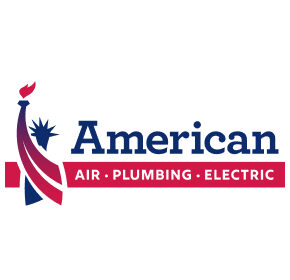The air distribution system in your Sanford, FL, home has as much of an impact on the efficiency of your heater and air conditioner as any other factor. After all, if your ductwork leaks, much of the conditioned air your furnace, heat pump, or AC produces is likely deposited behind your drywall. Leaky air ducts can increase heating and cooling costs and set the stage for serious HVAC problems. They can also decrease the lifespans of your HVAC equipment. The following are several ways to spot leaky air ducts and a few tips for preventing them.
Understanding Ductwork Leaks
With leaky ducts, conditioned air seeps out before it reaches HVAC air vents and enters living spaces. Not only can duct leaks be found behind drywall, but they can also exist in attics, crawlspaces, garages, and basements. Depending on where your duct leaks are, they can release conditioned air prematurely and take air in. When air enters leaky ductwork in dusty, contaminated spaces, it never has the chance to pass through HVAC air filters or integrated HVAC accessories. Moreover, its temperature was never adjusted, nor was its humidity removed.
What Are the Common Causes of Duct Leaks?
Sometimes leaky ducts result from forceful impact events or other contact-related damage. For instance, if you have exposed ducting in your basement or garage, errant movements with a ladder might cause rips, tears, or small perforations.
Leaky air ducts can also result from unchecked pest infestations. Rodents, insects, and other pests enter HVAC ducting for the shelter and warmth it provides. Once inside, pests can cause a variety of structural deformations and tiny openings while moving around. Worse still, most pests leave various forms of residue behind, including shed exoskeletons and wings, fur, feces, and carcasses.
Aging ductwork can develop leaks along its seams as constant air movement and static pressure gradually force ducts apart. On average, HVAC air ducts last between 10 and 15 years. If you last had yours replaced nearly two decades ago, there’s a good chance they have air leaks.
Signs There’s an Air Leak in Your Home
Rising energy bills and prolonged heating and cooling cycles are signs of duct leaks. When conditioned air isn’t having the maximum impact on your living environment, your heater and air conditioner must work longer and harder to create and maintain your preferred temperature. However, there are many other signs of leaky, underperforming air ducts.
Decreased Air Quality and Its Impact on Us
Although standard HVAC air filters don’t capture and retain all airborne particulates, they minimize them well. If people in your household exhibit typical symptoms of low indoor air quality (IAQ), your ductwork could be to blame. With more allergens and contaminants circulating throughout your home and a far more dusty environment overall, building residents could contend with:
- Frequent bouts of coughing, sneezing, or wheezing
- Watery, itchy eyes
- Minor skin rashes
- Recurring headaches
- Sinus irritation and nasal congestion
You may even have to change your HVAC air filters more often due to the increasingly rapid build-up of collected debris.
Rising Humidity and How It Can Make You Feel
Ongoing humidity regulation from well-maintained HVAC systems prevents problems like condensation-covered drywall and windows, warped building materials, and fast-spreading mildew and mold. Humidity regulation also promotes higher levels of indoor comfort. If you have leaky air ducts, your living space could feel clammy or muggy even when your HVAC system is on.
Loud HVAC Noises and Where They Can Be Heard
Do you hear loud, rattling sounds when your heater or air conditioner is running? If you do, you probably have aging ductwork separating at its seams. Rattling noises often develop after 10 to 15 years of service, and they become increasingly loud as time goes on and the gaps in their seams grow wider.
If your air ducts take in lots of unfiltered air from your crawlspaces, attic, or basement, rattling sounds might result from pressure-related vibrations. When air ducts have blockages on their return sides, static pressure decreases and loosens, and aging ducts shake. You might even hear whistling or humming sounds as your ducts take in or as air escapes via holes, tears, or loose seams.
The Visible and Tactile Signs of Leaky Air Ducts
You can check for duct leaks by visually inspecting the exposed ducting throughout your home. Look for crushed or torn sections and evidence of pest problems. However, much of your home’s ducting is probably hidden behind drywall or other building materials. To check these features out, simply place your hand on any room wall that isn’t getting enough heated or cooled air. Some walls could feel warm to the touch when your furnace is on. Warm walls in cold rooms mean that conditioned air is deposited behind the drywall before reaching the air vent.
How Leaky Air Ducts Affect Your HVAC System
Leaky air ducts place a considerable amount of strain on HVAC equipment. Longer and more intense heating and cooling cycles can lead to short cycling, icing, overheating, and more. With duct leaks, central HVAC systems have difficulty creating uniform temperatures throughout buildings. Worse still, their extra work accelerates wear on nearly all of their components. Thus, even if you aren’t forced to replace your heater or AC prematurely, you’ll likely pay a small portion in frequent parts replacements over time.
The Importance of Regular Maintenance for Preventing Duct Leaks
General duct maintenance is included in most annual furnace and AC tune-up services. During these visits, we assess the integrity of ducting by checking for separated seams, perforations, tears, and other air leaks. When problems are identified, our team can take care of them immediately.
You should keep your HVAC air filter clean between routine HVAC maintenance. Inspect this component monthly and replace it as needed every 30 to 90 days. You can also clean off visible accumulations of debris at and just behind your HVAC air vents. To further protect and optimize the performance of your ducting, schedule professional duct cleaning regularly. According to the National Air Duct Cleaners Association (NADCA), residential HVAC air ducts should be professionally cleaned every two to three years.
Call for Professional Inspection and Repair Services
Due to the high-pressure levels and strong air forces in ducting, most duct leaks are progressive. Separating seams and tears tend to spread if they aren’t identified and addressed promptly. Scheduling professional inspection and repair services is the best way to prevent these issues from spiraling out of control. When you suspect duct leaks or other duct-related problems, turn your HVAC system off and seek help.
Since 1986, we’ve proudly served homeowners throughout Sanford, FL, and the surrounding communities. We offer exceptional air conditioning, heating, and indoor air quality services. We also provide ductless mini-splits, new ductwork, and duct cleaning. Get in touch with American Air, Plumbing, and Electrical today to have your leaky air ducts repaired.


